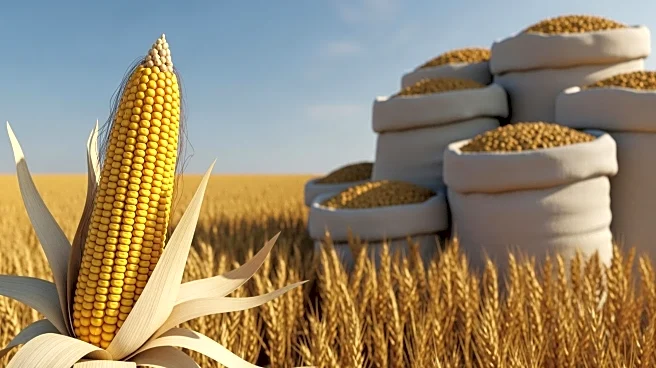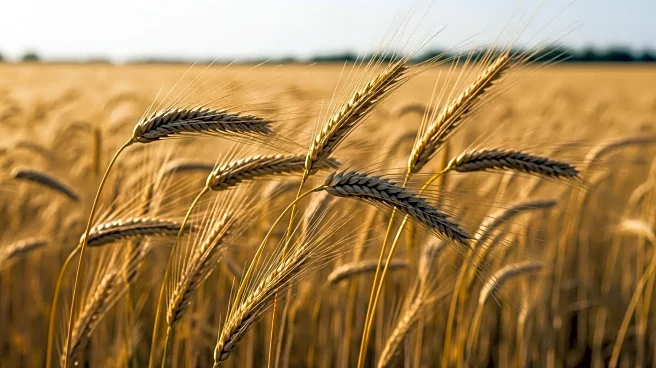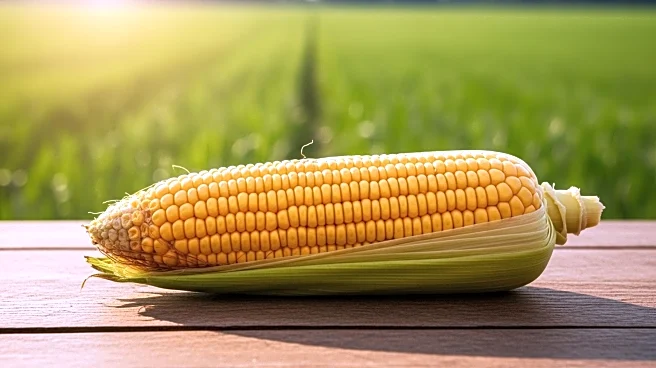What's Happening?
Grain markets experienced a downturn following the holiday weekend, with December corn, November soybeans, and various wheat futures all showing declines. December corn fell by 4¾ cents to $4.15½ per bushel, while November soybeans dropped 15 cents to $10.39½ per bushel. Wheat futures also saw decreases, with December CBOT wheat down 11 cents to $5.23¼ per bushel, December KC wheat down 11 cents to $5.08¾ per bushel, and December Minneapolis wheat down 7¾ cents to $5.72¼. The Brock Report attributed the defensive start to the week to non-threatening U.S. weather conditions and a lack of fresh demand news. In contrast, livestock futures showed gains, with live cattle, feeder cattle, and lean hogs all increasing. October crude oil rose by 93 cents to $64.94 per barrel, while the U.S. Dollar Index September contract increased to 98.24.
Why It's Important?
The decline in grain futures highlights ongoing challenges in the agricultural sector, particularly the impact of weather conditions and demand fluctuations on commodity prices. This downturn could affect farmers' revenue and influence decisions on crop sales and future planting strategies. The rise in livestock futures suggests a potential shift in market focus, possibly due to differing supply and demand dynamics in the meat industry. The increase in crude oil prices and the U.S. Dollar Index may also have broader economic implications, affecting input costs for farmers and influencing export competitiveness. These market movements are crucial for stakeholders in agriculture, finance, and energy sectors, as they navigate the complexities of commodity trading and economic conditions.
What's Next?
Market participants will likely monitor weather forecasts and demand signals closely to anticipate further movements in grain prices. Farmers may need to adjust their strategies based on these trends, potentially considering alternative crops or hedging options to mitigate risks. The livestock market's performance could prompt increased interest in meat production and exports, depending on consumer demand and international trade conditions. Additionally, fluctuations in crude oil and currency values may influence broader economic policies and trade negotiations, impacting agricultural exports and input costs. Stakeholders will need to stay informed and adaptable to navigate these evolving market dynamics.












